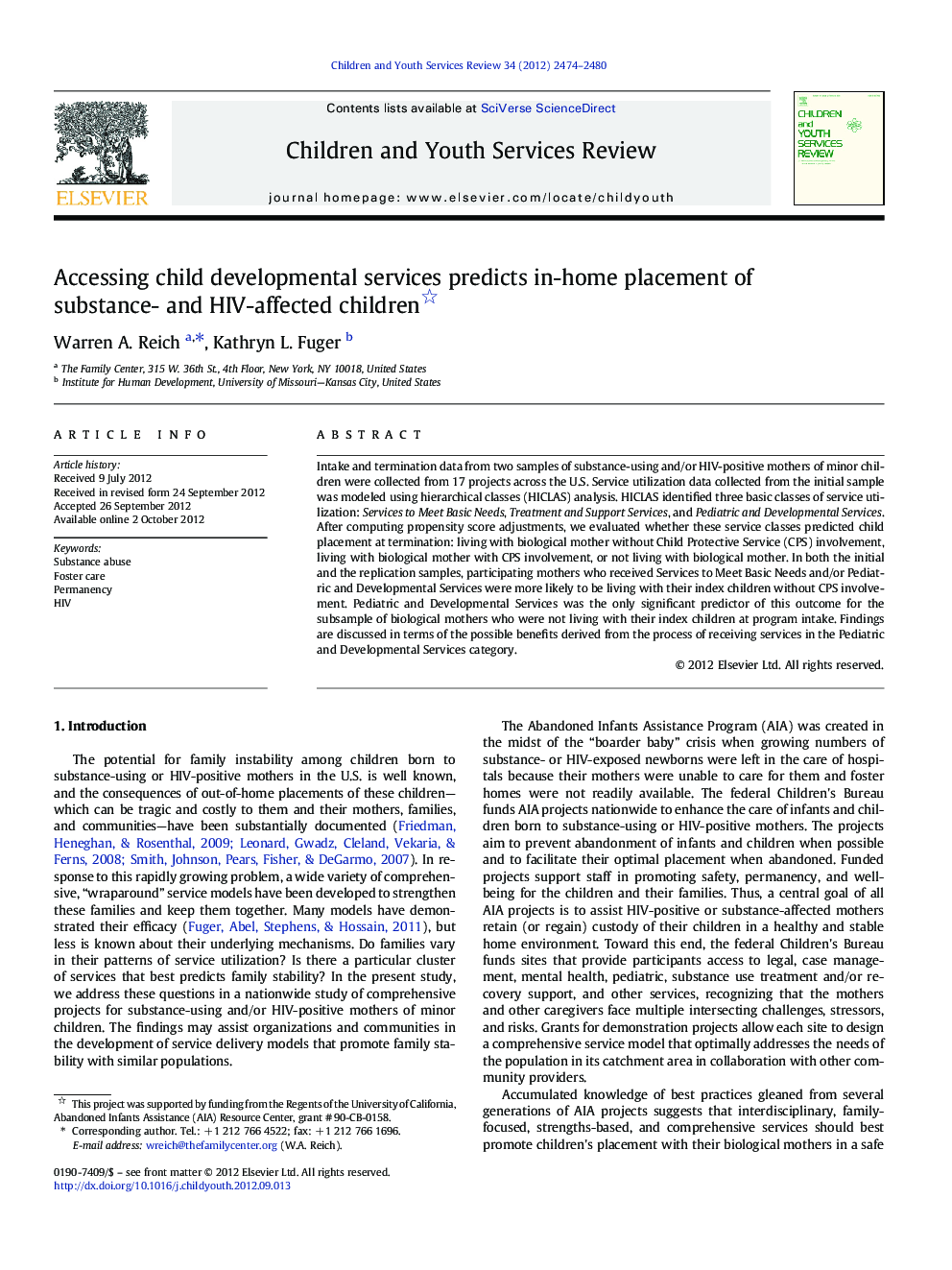| Article ID | Journal | Published Year | Pages | File Type |
|---|---|---|---|---|
| 346319 | Children and Youth Services Review | 2012 | 7 Pages |
Intake and termination data from two samples of substance-using and/or HIV-positive mothers of minor children were collected from 17 projects across the U.S. Service utilization data collected from the initial sample was modeled using hierarchical classes (HICLAS) analysis. HICLAS identified three basic classes of service utilization: Services to Meet Basic Needs, Treatment and Support Services, and Pediatric and Developmental Services. After computing propensity score adjustments, we evaluated whether these service classes predicted child placement at termination: living with biological mother without Child Protective Service (CPS) involvement, living with biological mother with CPS involvement, or not living with biological mother. In both the initial and the replication samples, participating mothers who received Services to Meet Basic Needs and/or Pediatric and Developmental Services were more likely to be living with their index children without CPS involvement. Pediatric and Developmental Services was the only significant predictor of this outcome for the subsample of biological mothers who were not living with their index children at program intake. Findings are discussed in terms of the possible benefits derived from the process of receiving services in the Pediatric and Developmental Services category.
► Data were collected from substance-using or HIV-positive mothers of minor children. ► Hierarchical classes analysis identified three classes of service utilization. ► Two service classes predicted in-home placement of children at termination. ► One service class predicted reunification of children not living at home at intake.
